The vertex of this function:
y=2(x-1)^2+3
What is (1, 3)?
The vertex of the following graph:
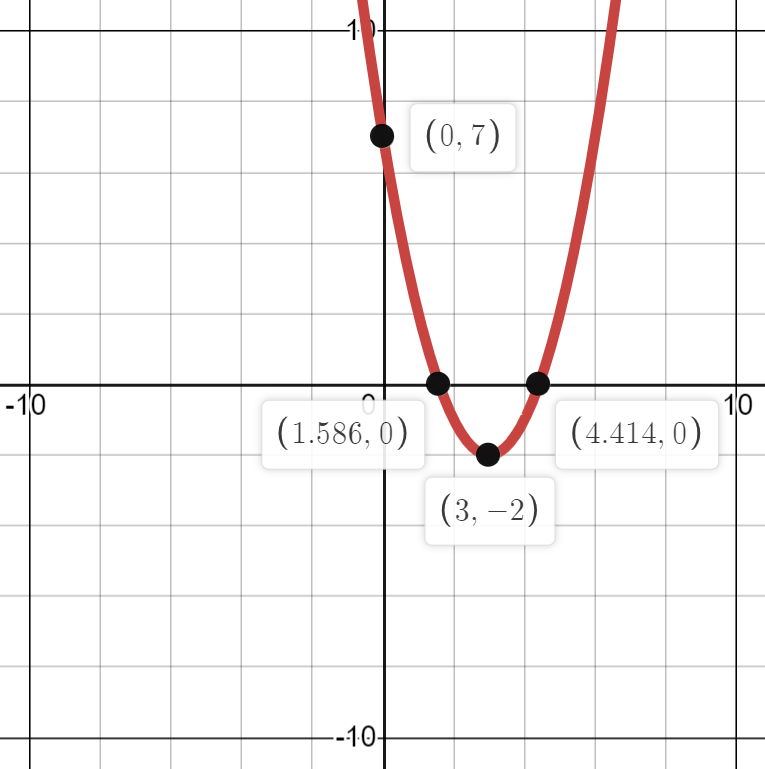
What is (3, -2)?
Solve
x^2=144
What is +12 and -12?
The form this equation is in:
y=-x^2+x-1
What is Standard Form?
Subtract the following functions.
f(x)=2x^2-3
g(x)=3x+5
What is
(f-g)(x)=2x^2-3x-8
The axis of symmetry of this function:
y=2x^2-4x+18
What is
x=1
The axis of symmetry of the following graph:
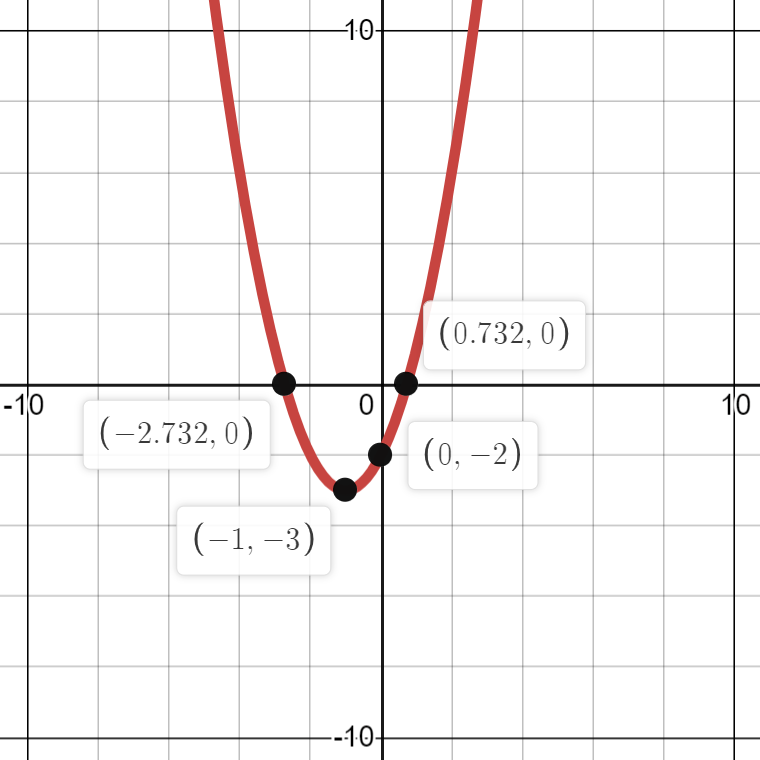
What is
x=-1
Solve
(x-3)^2=121
What is -8 and 14?
The form this equation is in:
y=(x-3)^2+8
What is vertex form?
Multiply the two functions below:
f(x)=x-3
g(x)=x^2+5
What is
(f*g)(x)=x^3-3x^2+5x-15
The vertex of this function
y=x^2+4x-1
What is (-2, -5)?
The zero(es) of the function shown:
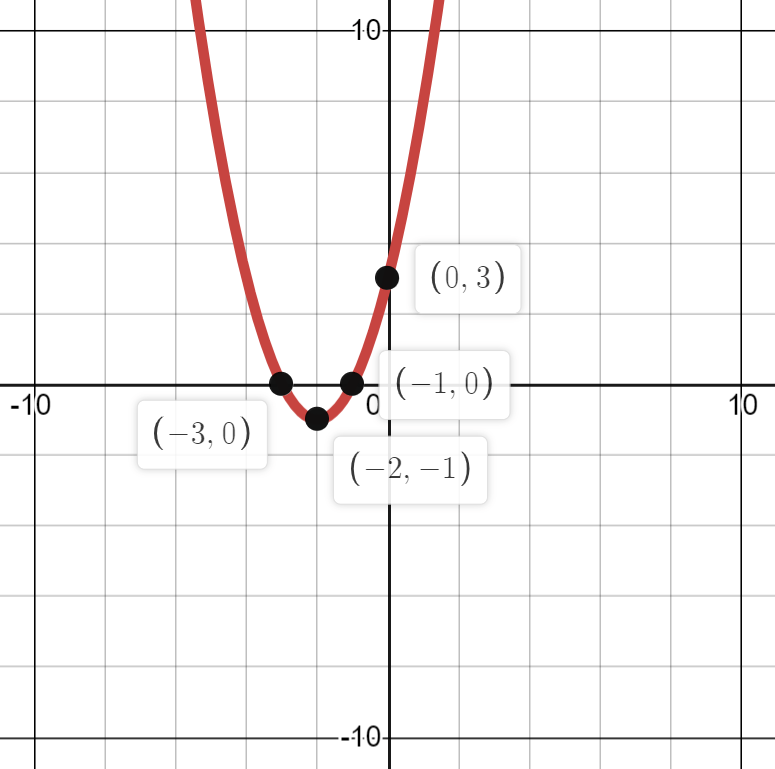
What is -3 and -1?
Solve
x^2-4x+4=0
What is 2?
This equation in Standard Form.
y=4-2x^2+3x
What is
y=-2x^2+3x+4
The value of "c" to yield a perfect square trinomial?
x^2-14x+c
What is 49?
The x-intercepts of this function:
y=x^2+7x-8
What are (-8, 0) and (1, 0)?
The answer(s) to the system of equations shown below:
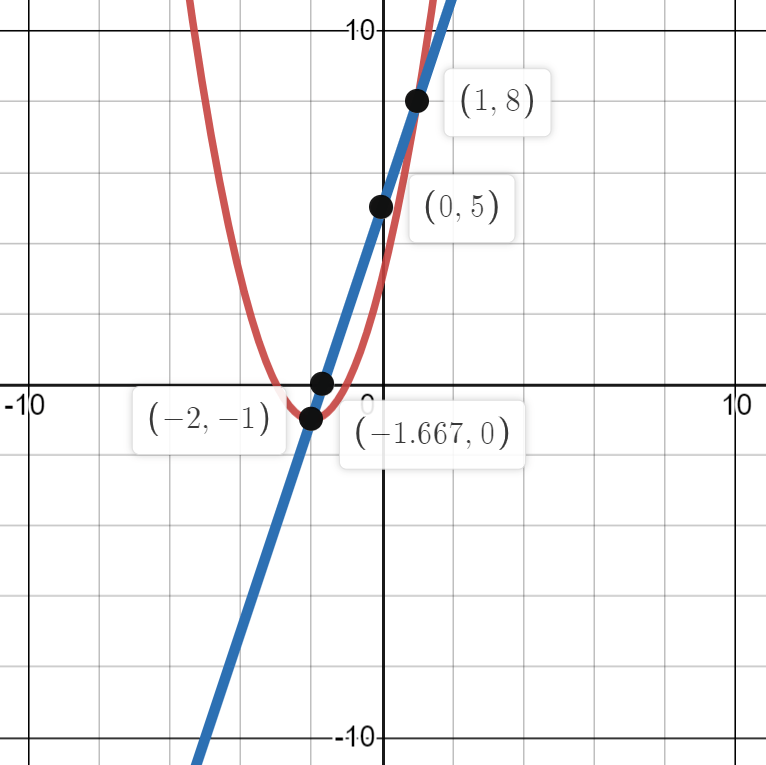
What is (-2, -1) and (1, 8)?
Solve
2x^2-5x=12
What is -3/2 and 4?
This equation in Standard Form.
y=(x-3)(x+4)
What is
y=x^2+x-12
The new equation if the parent quadratic function is translated up 5 and to the right 3.
What is
y=(x-3)^2+5
The y-intercept of the following function:
y=-(x+3)^2-8
What is (0, -17)?
What is the maximum of the function shown?
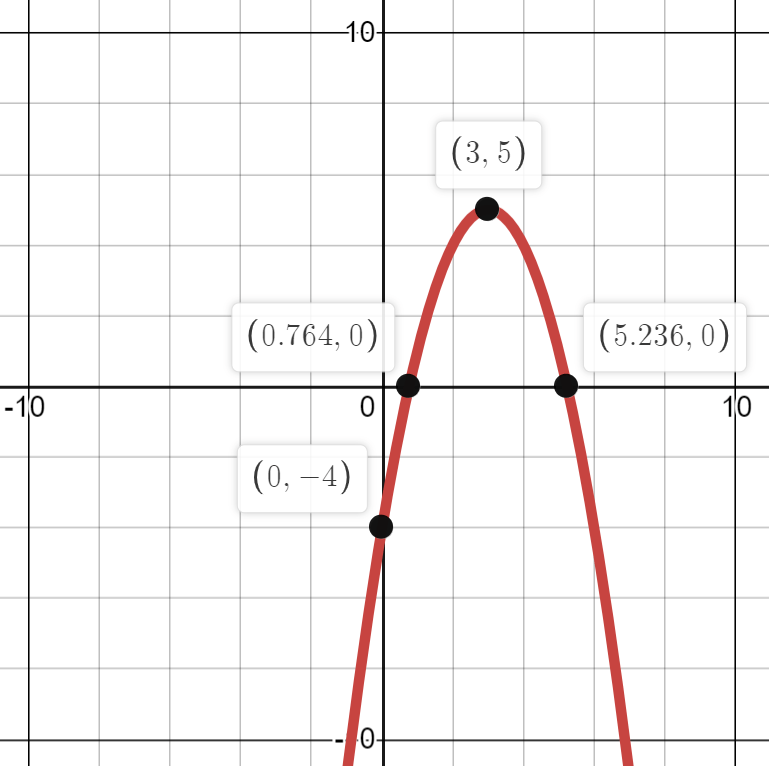
What is 5? (only the y-coordinate of the vertex)
Solve
4x^2=10x+5
What is -0.43 and 2.93?
This equation in standard form:
y=2(x-6)^2+10
What is
y=2x^2-24x+82
Write the following in vertex form.
y=x^2-4x+7
What is
y=(x-2)^2+3